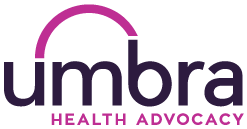Preventing a Deadly Outcome from a Visit to the Doctor

Today I'm sharing an experience with you in hopes of preventing something we do but don't think about; something which can be dangerous.
At a recent doctor appointment, I found two people in the waiting room just hacking away, coughing up a storm, and very likely infecting others. They were together, and there for only a minute before the nurse took them back to the exam room, removing them from proximity to the rest of us who were waiting. I went to the reception window and asked for bleach wipes, but instead they sent someone out to wipe down the arms of the chairs those two folks had been sitting in, and the table and magazines in front of where they sat.
But I guarantee - there were still bugs remaining in the waiting and reception area. I had to wonder - how many others might get sick from those germs?
As I continued to wait for my appointment, I thought back to a similar, probably more deadly experience 10 years ago.
Remember Swine Flu? In 2009, the Swine Flu pandemic put the world under siege from a microscopic bug, naked to the eye - and yet, a killer. Almost 61 million Americans contracted it, and more than 12 thousand Americans died from it. Globally, hundreds of thousands of people died from Swine Flu.
In the middle of the Swine Flu crisis, I had a check-up appointment. I arrived at the doctor's office (not the same doctor - I have moved 1200 mile since then) to an overflowing waiting room, walked to the check-in window, and was asked to sign in.
I looked down at the pen and paper I was expected to use, and instead dug my own pen out of my purse to sign my name. I could only imagine how sick I might also get if I used the office pen! (I then looked around, saw how many sick people were there, told them I was leaving, and I would call to reschedule. I didn't want to stay so exposed in that waiting room.)
It's possible I saved myself from getting sick, or even dying. I realize that may sound overly dramatic - but - who knows? I'm not even a germophobe, but I will certainly protect myself when circumstances and possibilities are so obvious.
Fast forward, back to today... It seems like a simple thing, right? A shared pen for signing in? But the problem is exacerbated by coughing patients who are also touching other things in the waiting room like the chairs they sit in, magazines, and other items that could carry germs brought in by other patients.
And then, of course, there are the exam rooms themselves...
 Who wants to get sick?
Who wants to get sick?
So - here are a few thoughts and suggestions for smart patients, especially as we come up on flu season:
Doctors offices, just like hospitals, can be dangerous places. Be prepared when you have an appointment!
- Use your own pen to sign in.
- Take some bleach wipes with you to wipe down your chair arms, and surfaces others may have touched, in both the waiting and exam rooms.
- During flu season, consider taking a scarf or face mask with you. If germs are in the air, cover your nose and mouth.
- Ask the receptionists how often the waiting room and exam rooms are wiped down and cleaned. They may not know, and if they don't, ask them to ask others. Then, ask the doctor the same question. Just asking the question puts them on notice, reminding them of how dangerous it can be. They should know! But they get busy and don't stop to think about it.*
- Use their sanitizer before you leave, or take your own to use as soon as you leave. Afterward, wash your hands as soon as you get the chance.
None of us can afford to get sick, and none of us want to get sick... so taking these simple steps is a small price to pay for protection. Do it for yourself, and especially do it for someone you might accompany to the doctor, someone who is at higher risk of getting sick, especially an elderly person, a baby, or someone with a compromised immune system.
*Are you uncomfortable asking these questions? Take a professional advocate with you to keep yourself safe.
Find a Health / Patient Advocate or Navigator
It's our 10th Anniversary!
Learn more about The Alliance of Professional Health Advocates
